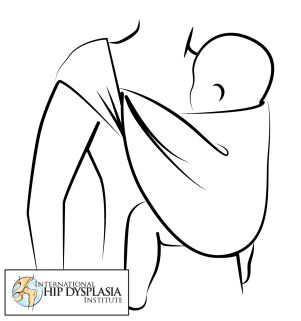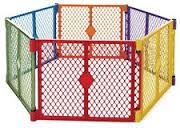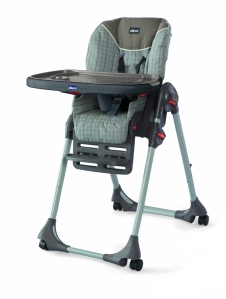Continuing from an earlier discussion on variety of baby equipment, let’s finally talk about the equipment that does not have any significant positive impact on development.
1) Bouncer:
This is very commonly used for infants’ up to 4-5 months. As soon as the baby has some upper body control over movements, this gets too dangerous. Being lightweight there is a high risk of the bouncer flipping over or the baby falling out when they get antsy.
There is no developmental value to a bouncer and will be used sparing for a few months anyway. Floor time is the most beneficial for development in the first few months.
2) Jhoola:
This is a very commonly used home-made cradle used mainly for sleep in India. The position of the hips and spine in this cradle is harmful to hip development. The position of the hips in the womb is flexed and turned out. After the baby is born, this position naturally changes with motor control and coordination slowly developing over several months. Unnecessary stretching legs out before time may cause hip dysplasia or other hip problems during development. The position in a jhoola is exactly this- legs extended and hips brought together.
The picture below is of a baby positioned incorrectly in a carrier, not of the baby sleeping in a jhoola but demonstrates the same position.
Another aspect of jhoola is the restriction of natural movement during sleep. The baby does not have enough space to move and naturally change body position as we all do in sleep. On some occasions, the jhoola is tied in such a manner that the top ends are closed causing risk of suffocation.
We strongly recommend parents to NOT use a jhoola for sleep; rather lay a mattress of the floor for safe sleeping.
3) Bumbo seat:
This seat has recently been introduced in Indian markets, and is very popular in the US, especially for seating infants before they are 6-7 months old.
The baby is basically sitting upright with passive support of the seat , their spine is still in the “C” shape. The baby is slumped over with a rounded back, the head come forward and they get stuck. No muscle work is happening at all. On the other hand, when a baby starts sitting on their own, their back muscles start working and their spine is in the “S” shape. If they feel they are falling, they can put their hands out and try to stop the fall. They are learning to balance and their muscles are strengthening at the same time. There is a backward slant to the seat which makes the child lean back. The feet do not touch the ground to activate the hip-knee muscles and the head either is maintained awkwardly or falls back when the baby gets tired.
There are huge developmental ramifications for seating an infant up before 6 months. As we reviewed briefly in part 1, (read more details of motor milestones here) fine motor skills for later years are build on the weight bearing on palms in the first few months of life. The Bumbo allows for sitting upright with partial back support, rather than leaning forward using arms. This takes away from weight bearing as mentioned above.
Our body is in balance when the body weight is maintained over the support surface. But when we move from one position to another, our upper body leans forward slightly and our hips and knees act as the stabilizing force to have a smooth movement. In the Bumbo and walker/jumperoo, this leaning forward is actually reversed. The hips and knees are not being utilized at all and the head just hangs forward to maintain some stability.
Overall, the Bumbo is NOT necessary and harmful for development even though the manufacturer would claim its benefits.
4) Walkers/jumperoo/walking wings:
Walkers are one of the most frequently asked questions on our online parent support group. These traditional walkers have been around since generations. I believe I read somewhere that the some painter in the 1400’s had painted baby Jesus in a walker!
Our muscle control is designed to develop in a staggered manner, which means the earlier skills are foundation on which new skills develop. With enough space and freedom to explore their own body movements and surroundings, each child will develop these skills at their own pace. By parents adding restrictions like not leaving the child on the floor or forcing positions like putting them in equipment like walkers/jumpers just creates additional work for the brain and body to learn in an unnatural way.
As we discussed above, the hips are should not be forced into straightening before the muscles can gradually control this movement. Putting infants in the walker/jumperoo/walking wings seat creates this exact situation which the legs dangling down.
Most often, the soles of the feet are not entirely touching the ground and the kid is hanging on its toes. Frequently this gives the child a mis-leading sense of using their whole feet to walk and the child may end up being a toe-walker for more than necessary leading to further muscle problems of the ankle.
The bucket seat of walkers also does not allow the feet to take a step forward as expected in typical gait but the child moves the walker forward by actually pushing back with their feet. So walkers are not actually teaching the child to walk in the correct manner.
There is the issue of speed in a walker. With not enough trunk control the child is unable to learn how to stop or reduce speed. When the child is ready to walk, they learn to keep their weight over the feet and balance their trunk during stepping forward. With walkers, there is no way for them to lean back and learn the minute changes the body makes to maintain balance.
The less harmful type of walkers is this push walker. This walker can be used when the baby is starting to take some weight on the legs> So thankfully parents start to use these slightly later than a traditional walker. But the issues with weight bearing on front of the feet rather than the whole foot, trunk leaning forward and speed of the walker still remain. As a fun activity, these walkers might do for a while but they do not help facilitate walking. Push walkers need adult supervision for speed.
Over the years of clinical practice, I have realized the best type of push walker is a shopping cart. Simply because you can weight it down by putting things in it which will slow down the speed. It also helps with the forward lean if the weight is so much that the child has to actually push the cart to move it forward.
In short, NO walkers, jumperoo’s or walking wings!
Having reviewed most of the commonly used and discussed baby equipment, you will find that very few are actually practically useful. We have also provided with safer options to contain a baby when a parent is alone and needs to use the restroom or some other house work that is unsafe for the baby to be close to. Do consider these before making a decision based purely on parent needs.
There are recommendations available where 20 mins of time in a jumperoo is considered reasonable and not harmful. But its also good to remember than just a few minutes during various times of the day add up quite often to a couple hours total!
The best equipment is the floor and it has the maximum number of developmental benefits beating all these manufactured items hands down!
Happy Parenting!
Puja
3/29/2015.




















